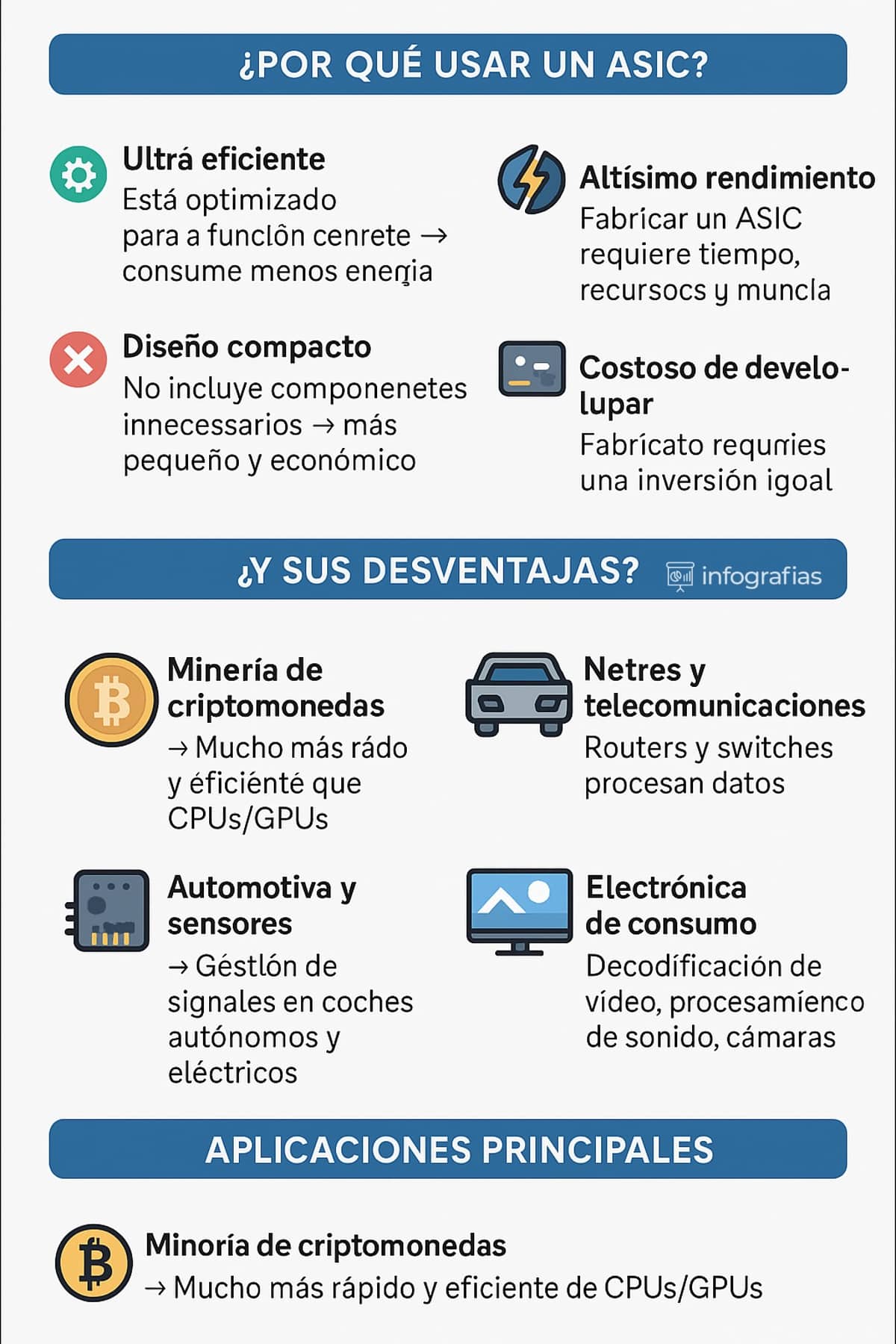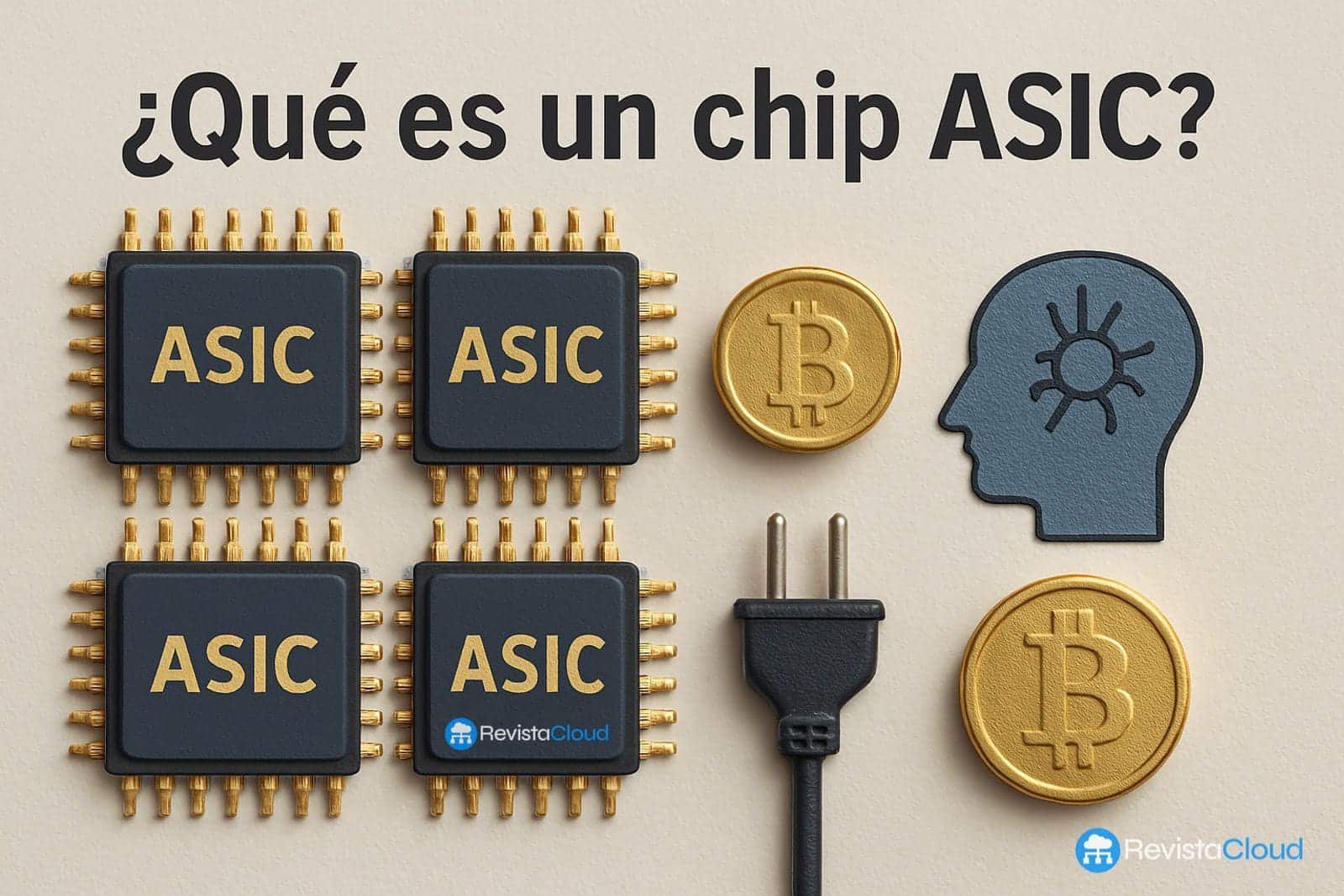Sure, here’s the translation into American English:
ASIC chips (Application-Specific Integrated Circuit) are processors designed to perform a single task with maximum efficiency. Unlike general-purpose chips, such as CPUs or GPUs, which can adapt to various functions, ASICs are manufactured to fulfill a specific mission, making them key components in industries where performance and energy efficiency are crucial.
What Makes an ASIC Special?
An ASIC chip is hardware-optimized for a single specific task, allowing it to execute that task faster and with lower energy consumption than any CPU or GPU. However, this extreme optimization means that it cannot be reprogrammed or used for anything else. In summary, it does one thing, but it does it very well.
For example, a CPU can perform all kinds of tasks—from browsing the internet to video editing or gaming—but it won’t be the most efficient option for any of them compared to specialized hardware. In contrast, an ASIC designed for cryptocurrency mining will only do that… but it does it much faster and with less energy.
Examples of Well-Known ASICs
Some of the most recognized ASICs include:
- Antminer from Bitmain and Whatsminer from MicroBT, used for cryptocurrency mining like Bitcoin.
- Google’s TPUs (Tensor Processing Units), designed to accelerate artificial intelligence tasks.
- The audio processor from Cirrus Logic, found in numerous consumer devices.
- Some specialized network chips from Broadcom.
- The Intel SGX security chip, focused on encryption and protecting sensitive data.
All of them could, in theory, be replaced by a properly programmed CPU or GPU, but never with the same efficiency.
Main Applications of ASICs
- Cryptocurrency Mining: one of the most popular uses of ASICs was—and still is—the mining of crypto assets like Bitcoin. These chips are specifically designed to perform the complex hash calculations required for transaction validation. Thanks to their energy efficiency and speed, they have completely outperformed CPUs and GPUs in this field.
- Telecommunications and Networking: used in routers, switches, and modems to process data efficiently at high speeds.
- Artificial Intelligence: chips like Google’s TPUs are a type of ASIC applied to machine learning, where significant processing power is required for very specific tasks.
- Automotive: used in electric and autonomous vehicles to manage sensors, perform signal processing, or control internal systems.
- Consumer Electronics: from televisions to security cameras, many devices include ASICs for specific tasks like video encoding, image processing, or sound management.
- Cybersecurity: some ASIC chips are designed to perform cryptographic functions, such as encryption and authentication, with high efficiency and security.
Advantages of ASICs
- Energy Efficiency: designed for a single task, they consume less energy than generic chips.
- High Performance: they can perform their specific function much faster than other processors.
- Compact Design: they eliminate unnecessary components, optimizing space on the silicon.
Disadvantages
- Lack of Flexibility: they cannot adapt to new tasks. Once manufactured, an ASIC cannot be reprogrammed.
- High Cost: developing an ASIC is time-consuming and expensive. It is only justified in high-volume applications or where extreme performance is critical.
In Summary
ASIC chips have earned a prominent place in sectors where specialization and efficiency are essential. Although they are not suitable for general tasks, their ability to perform a specific function with unmatched speed and efficiency makes them indispensable in fields like cryptocurrency mining, artificial intelligence, advanced electronics, and telecommunications. Ultimately, ASICs are the perfect representation of how technological specialization can make a difference in an increasingly demanding world in terms of performance and energy consumption.


